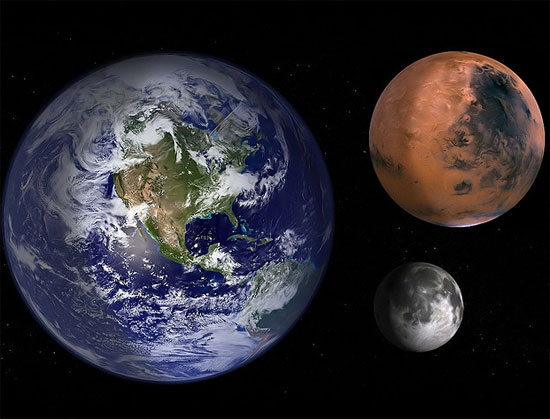How is the earth if the moon disappears
A study shows that if the moon does not exist or leave the earth, life on our planet is still growing normally.
The tilt of the earth is now 23.44 degrees. The gravitational pull of the moon helps the earth stabilize its tilt during the sun's rotation, according to scientists. Thanks to the moon, every 100 thousand years, the tilt of the spindle changes only from 0.5 to 1 degree.

(Artwork: Flickr.com).
Some previous studies prove without the gravitational pull of the moon, every 100 thousand years the Earth's rotation will shift 85 degrees. Due to such a big change, the two polar poles in turn fall into too hot and too cold conditions over a 100 thousand year cycle.
Meanwhile, the scientific community confirmed that complex life forms on earth only develop if the climate is stable for 500 thousand years. Therefore, many scholars believe that, if the moon does not exist, the Earth's tilt axis will change, causing intense climate change that causes all forms of life to be destroyed. Its consequence is that the planet becomes a lifeless planet.
However, Jason Barnes, a planetary expert at the University of Idaho in the US, believes that if the moon disappears, life on Earth still grows.
Discovery said, Barnes and colleagues set up computer models to understand the state of the earth without the moon. The model shows that if the moon does not exist, the tilt of the earth will vary greatly. But the attraction from Jupiter and other factors will control the change in the threshold of about 10 degrees in all directions .
" The change above or below 10 degrees can all have a big impact, but I think that change is hard to prevent the development of life ," Barnes said. Barnes's model also shows that, if the earth revolves around the sun in the opposite direction, it will not need the moon to maintain climate stability.
The research of Barnes group attracted the attention of many scientists.
" Barnes' findings are quite interesting and stimulate curiosity, " commented Richard Vondrak, a NASA scientist.
- Moon dives looking from outer space
- What if the Earth disappears?
- What will happen if we destroy the Moon?
- Unbelievable facts about the Earth
- Video: Scenes on Earth if the Sun disappears
- The moon is separated from Earth?
- Photo: Manually watch the biggest moon in 20 years
- Does the Moon have its own moon? And you will be surprised with its name!
- At the time of dinosaurs, volcanoes on the Moon used to work?
- What happens if the Earth's atmosphere disappears?
- What happens if the Moon falls to Earth?
- 'Super moon' is about to appear
 Van Allen's belt and evidence that the Apollo 11 mission to the Moon was myth
Van Allen's belt and evidence that the Apollo 11 mission to the Moon was myth The levels of civilization in the universe (Kardashev scale)
The levels of civilization in the universe (Kardashev scale) Today Mars, the sun and the Earth are aligned
Today Mars, the sun and the Earth are aligned The Amazon owner announced a secret plan to build a space base for thousands of people
The Amazon owner announced a secret plan to build a space base for thousands of people